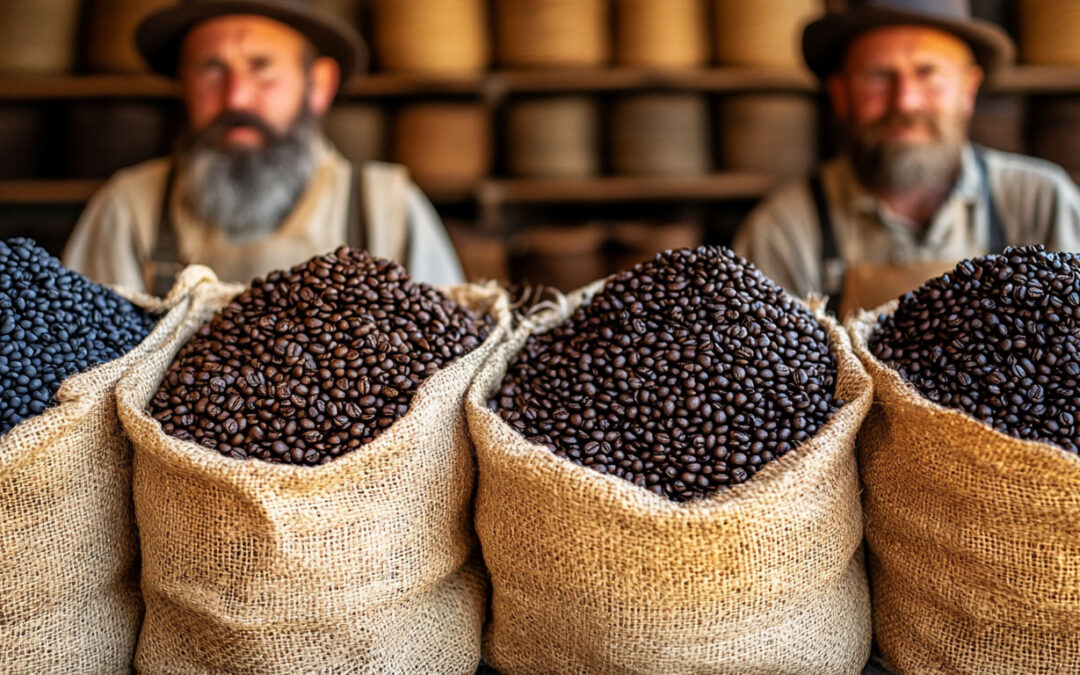Simplicity, Skill, and Quality
When it comes to coffee, most people imagine high-tech espresso machines or mass-produced packaging lines. But for the Amish, coffee-making is a craft rooted in simplicity, tradition, and quality. Without relying on modern conveniences like electricity or automated machinery, the Amish have perfected their own methods of roasting, grinding, and packaging coffee—all by hand.
This process isn’t just about producing a great cup of coffee; it reflects their commitment to self-sufficiency, sustainability, and craftsmanship. So, how exactly do the Amish make and package coffee? Let’s dive in.
The Amish Coffee-Making Process
The Amish embrace a more hands-on approach to coffee preparation, following methods passed down through generations.
Roasting the Beans
- Coffee beans are roasted using wood-fired or propane-powered roasters, as electric roasting machines are not typically used.
- The process requires careful attention to heat and timing, ensuring that the beans develop a rich and even roast.
- Some Amish communities roast coffee in small batches, maintaining a fresh, high-quality product.
Grinding the Coffee
- Since electric coffee grinders are not used, the Amish rely on hand-cranked grinders or manual burr mills.
- This method may take more effort, but it results in a consistent and flavorful grind.
- Some Amish households prefer to grind coffee fresh for each brew, enhancing its natural aroma and taste.
Brewing the Coffee
- Traditional brewing methods include stovetop percolators, pour-over techniques, or steeping ground coffee in hot water.
- Many Amish families favor cast iron or enamel coffee pots, which help retain heat for longer periods.
- The focus is on slow brewing, allowing the flavors to develop fully for a robust and satisfying cup.

Amish Coffee Packaging: A Simple Yet Effective Process
Packaging coffee without modern sealing machines requires a careful and methodical approach. The Amish use time-tested packaging methods that prioritize freshness and sustainability.
✔ Hand-Filled Bags – Instead of using automatic filling systems, coffee is measured and placed into bags by hand.
✔ Paper or Cloth Bags – Many Amish businesses opt for biodegradable materials, like kraft paper or cloth bags, which align with their eco-friendly values.
✔ Twine or Tin Ties for Sealing – Without plastic zippers or vacuum-sealed technology, Amish-packaged coffee is often secured using twine, tin ties, or folded tops.
✔ Handwritten or Stamped Labels – Rather than mass-printed packaging, Amish coffee often features handwritten labels or simple ink stamps, giving it an authentic, handcrafted feel.
Why Amish Coffee Stands Out
Choosing Amish-made coffee is about more than just the taste—it’s about supporting a way of life that values craftsmanship, sustainability, and community. Some of the biggest reasons people seek out Amish coffee include:
- Pure, handcrafted quality – Every step of the process is done with care, ensuring that each bag of coffee meets high standards.
- Sustainable and minimal waste – The Amish prioritize natural materials and reduced waste in their packaging.
- A taste of tradition – Their slow, traditional methods bring out the best flavors in the beans.
Experience the Authenticity of Amish Coffee
Whether you’re intrigued by their old-fashioned roasting techniques or drawn to their handcrafted packaging, Amish-made coffee offers a truly unique experience. Each cup tells a story of tradition, patience, and dedication to quality.
Next time you’re looking for coffee that’s made with care and authenticity, consider trying an Amish-roasted blend. You just might discover a new favorite way to enjoy your morning brew!

